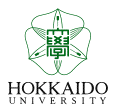 The
Sonoyama
Lab
The
Sonoyama
Lab
Laboratory of Gut
Physiology, Graduate School of Life Science
Laboratory of Food
Biochemistry, Faculty of Agriculture
Contact
Webmaster
Research Projects
- Prevention and treatment of allergic
disease by use of prebiotic non-digestible oligosaccharides.
Given
that gut microbiota is an environmental factor for the development of
allergic diseases, modulation of gut microbiota may prevent the
allergic diseases. Indeed, we have demonstrated that dietary
non-digestible oligosaccharides such as fructo-oligosaccharides
modulate gut microbiota and reduce allergic inflammation of atopic
dermatitis and contact hypersensitivity in mice. Prebiotics are defined
as non-digestible food ingredients, that beneficially affect the host
by selectively stimulating the growth and/or activity of one or a
limited number of bacteria in the colon, and thus improve host health.
Therefore, non-digestible oligosaccharides are regarded as prebiotics
for allergy prevention. We are now investigating the cellular and
molecular mechanisms for the allergy-preventing action of
non-digestible oligosaccharides.
Selected
Publications:
Sasajima N, Ogasawara T, Takemura
N, Fujiwara R, Watanabe J, Sonoyama
K. Role of intestinal Bifidobacterium
pseudolongum in dietary fructo-oligosaccharide inhibition of
2,4-dinitrofluorobenzene-induced contact hypersensitivity in mice. Br J Nutr 2010;
103: 539-548.
Fujiwara R, Takemura N, Watanabe J, Sonoyama K. Maternal consumption of
fructo-oligosaccharide diminishes the severity of skin inflammation in
offspring of NC/Nga mice. Br J Nutr
2010; 103: 530-538.
Sonoyama K, Ogasawara T, Goto H, Yoshida T, Takemura N, Fujiwara R,
Watanabe J, Ito H, Morita T, Tokunaga Y, Yanagihara T. Comparison of
gut microbiota and allergic reactions in BALB/c mice fed different
cultivars of rice. Br
J Nutr 2010; 103: 218-226.
Watanabe J, Sasajima N, Aramaki A, Sonoyama, K. Consumption of
fructo-oligosaccharide reduces 2,4-dinitrofluorobenzene-induced contact
hypersensitivity in mice. Br J Nutr 2008;
100: 339-346.
- Gut colonization by Candida albicans as a risk factor for allergic disease.
It
has been postulated that excessive colonization by C. albicans, part of
the gut microbiota of healthy humans, may be triggering and/or
aggravating factor for allergic diseases. In order to test this, we
established a mouse model of chronic and latent gut colonization by C.
albicans. Using this model, we have demonstrated that gut colonization
by C. albicans promotes oral sensitization by food antigens and
aggravates inflammation in allergic and autoimmune diseases, not only
in the gut but also in the extra-gut tissues. The next step of our
study is to establish the cellular and molecular mechanisms.
Selected
Publications:
Sonoyama K, Miki A, Sugita R, Goto H, Nakata M, Yamaguchi N. Gut
colonization by Candida albicans aggravates
inflammation in the gut and extra-gut tissues in mice. Med Mycol 2011;
49: 237-247.
Yamaguchi N, Sugita R, Miki A, Takemura N, Kawabata J, Watanabe J,
Sonoyama K. Gastrointestinal Candida
colonisation promotes sensitisation against food antigens by affecting
the mucosal barrier in mice. Gut 2006; 55:
954-960.
Yamaguchi N, Sonoyama K, Kikuchi H, Nagura T, Aritsuka T, Kawabata J.
Gastric colonization of Candida
albicans differs in mice fed a
commercial stock diet and a purified diet. J Nutr 2005;
135: 109-115.
- Prevention and treatment of obesity
and metabolic syndrome by use of probiotics.
Recent
studies suggest a link between gut microbiota and host adiposity. If it
holds true, modulation of gut microbiota would be a potent preventive
and/or therapeutic approach to the obesity and related diseases. We
recently observed a reduction of adipocyte size by oral administration
of a specific strain of lactic acid bacteria, i.e., Lactobacillus
plantarum strain No.14, in high-fat diet-induced obese mice. Thus, this
strain could be a possible candidate for obesity-preventing probiotics.
We are currently studying this action more in detail.
Selected
Publications:
Takemura N, Hagio M, Ishizuka S, Ito H, Morita T, Sonoyama K. Inulin
prolongs survival of intragastrically administered Lactobacillus plantarum No. 14 in
the gut of mice fed a high-fat diet. J Nutr 2010;
140: 1963-1969.
Takemura N, Okubo T, Sonoyama K. Lactobacillus
plantarum strain No. 14 reduces adipocyte size in mice fed
high-fat diet. Exp
Biol Med (Maywood) 2010; 235: 849-856.
- Mutualism between gut microbiota and host in hibernating mammals
(e.g., Syrian hamsters and Japanese black bears).
Hibernation
essentially involves periods of fasting that is known to affect both
the gut microbiota and the gut mucosal barrier function in
non-hibernating mammals such as mice and rats. Specifically,
long-lasting deprivation of oral feeding by total parenteral nutrition
increases the risk of bacterial translocation due to reduced gut
mucosal barrier in rats. In contrast, there are no evidence that
hibernation increases the risk of bacterial translocation. It is
therefore of interest to investigate the changes in the gut microbiota
and gut epithelial structure and function that may take place during
hibernation. We are investigating it by using Syrian hamsters and
Japanese black bears as models of hibernators.
Selected
Publications:
Sonoyama K, Fujiwara R, Takemura
N, Ogasawara T, Watanabe J, Ito H,
Morita T. Response of gut microbiota to fasting and hibernation in
Syrian hamsters. Appl
Environ Microbiol 2009; 75: 6451-6456.
 The
Sonoyama
Lab
The
Sonoyama
Lab